

NORTH CAROLINA
May 2000

1 of 1


NORTH CAROLINA
May 2000


1 of 1
This spring my brother Ron and I returned to the same spots where we had seen so much the year before. This
time our target is the Canebrake Rattlesnake (once considered a distinct subpecies, but now simply regarded as the
southern coastal plain variation of the Timber Rattlesnake, Crotalus horridus). We’re hopeful because temps are warmer
this time around, but upon our arrival we also discover that conditions are much drier. Perhaps that accounts for our
not seeing as much on this second trip (unfortunately, no Canebrakes) but we do find some different species.
The first is a great spot by Ron. We’re searching the edges of a small, weedy wetland and his eye catches the
slightest bit of movement in the middle. There is a tiny something sticking up just above the surface of the water
among the weeds, and we decide it’s either a real little frog, or just maybe, the tip of a snake’s nose. Only one way to
find out, so Ron goes wading up to his knees in mud, carrying the net we brought for just such occasions. He gets out
to the spot, does sort of a blind scoop in the general vicinity of the dot, and comes up with a nice fat Redbelly Water
Snake. It promptly rewards him by disgorging the very slimy, disgusting remains of a green frog. We do not take a
picture of that.
We have a repeat experience in another grassy pond, but this time the nostrils belong to a turtle.
We also catch several Black Racers, including one under the same piece of tin where we flipped a Kingsnake the
year before.
Flip another piece of tin and almost miss this cute little guy, thinking for a split sec that it’s an earthworm, and for
good reason: It's a Worm Snake.
We also find amphibians hiding under cover.
Another cutey that we spot dashing between boards.
In a knee-deep swamp we discover some eggs buried in a rotting log. No idea what species they’re from.
The common lizard where there are pines is the Fence Lizard. We catch this female in the classic going-up-the-
tree routine, with Ron on one side and me on the other, till we succeed in chasing it into someone's hand. Amazingly,
once we hold her for a few minutes she becomes completely cooperative, letting us position her for poses with no
further attempt at escape. I'd like to claim that it’s just our charm and the usual effect we have on females, but our
wives know better.
Ironically, a much less common lizard in North Carolina is Anolis carolinensis, the Green Anole. This one makes
sure we know who is king of the rail, as he bobs and extends his dewlap for our benefit
.
And we pick up a hitchhiker. I’m holding a female Five-lined Skink by the open back door of our van when she
simply squirts right out, lands in the way-back, and disappears under the seats. Look and look, but to no avail, so we
take off for our next spot.
About an hour later I happen to glance down at my feet and there's the Skink resting on my boot. I slowly raise
my foot towards my hand, make a grab, and miss. The Skink jumps on my sleeve, slithers north to my shoulder, then
jumps to the dashboard, where I finally pin her in the corner. We take a mug shot, then send the elusive fugitive on
her way.
Finally, the highlight of this trip. While road cruising at night we had twice come upon fresh roadkills of Mud
Snakes. One was still twisting from the car in front of us (don't you just hate that?). At last, on the morning we’re
leaving, right in broad daylight, it’s our turn.
Notice the pointy tip of his tail. Like all Mud Snakes I've ever handled, this one makes absolutely no attempt to
bite, but he certainly keeps annoying me with little jabs from the other end. About 20 years ago I found a 6' giant
heading under my parked car in the Everglades. I thought it would make the perfect pet: impressively big,
uncommon, absolutely beautiful, and completely docile. Only problem is that their food is harder to find than they
are.
I brought it home thinking I could feed it frogs, only to discover that they feed almost exclusively on Amphiuma,
which I've never found in the wild (although once on an Everglades hike Ron actually came across a Mud Snake in the
middle of swallowing one). I understand some people have had success scenting frogs from frozen Amphiuma, but I
have no experience with that. I released my Everglades Mud Snake a week later and haven't tried again since.
As we return the Mud Snake to the swamp by the road, we almost step on this nearly invisible Green Snake. I
know they're common, but I think they're just beautiful.
This was our last live herp of the trip, and we left satisfied, but still sorry we hadn’t seen a Canebrake. On the
bright side, we had a good excuse to go back! However, our desire to see a 100% guaranteed Rattlesnake was strong
enough to send us out west the following year, leading to our first time ever herping in California and Arizona.
Ground Skink
Scincella lateralis
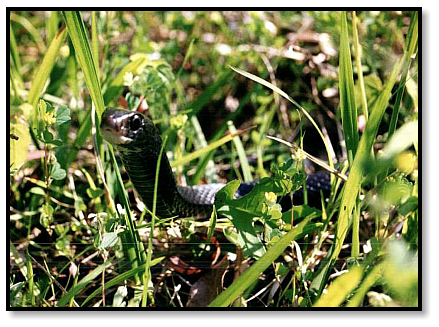
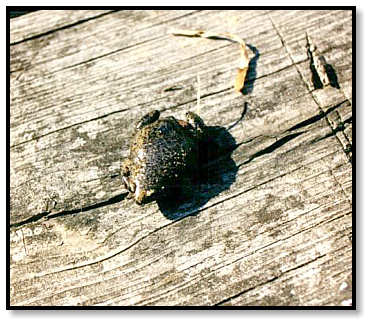
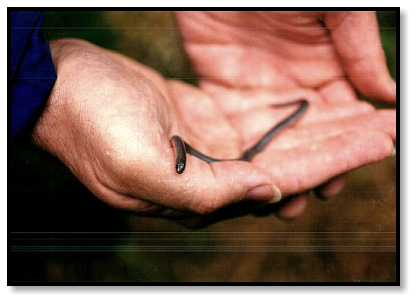
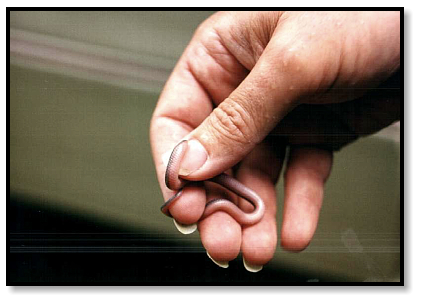
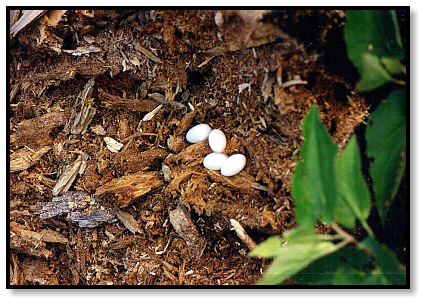


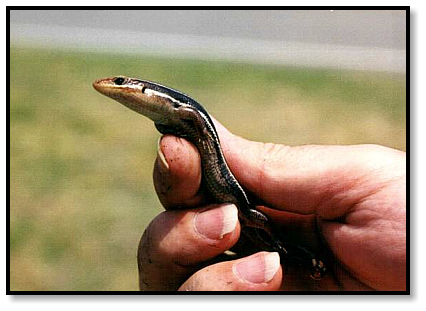
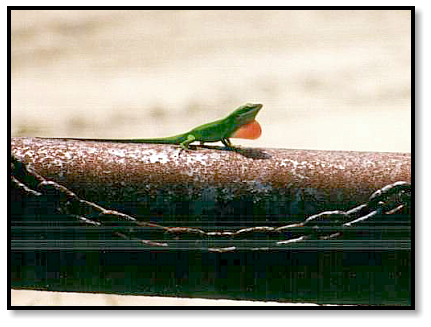
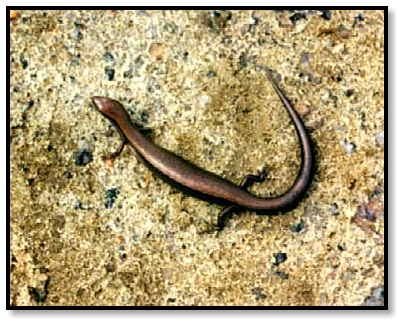
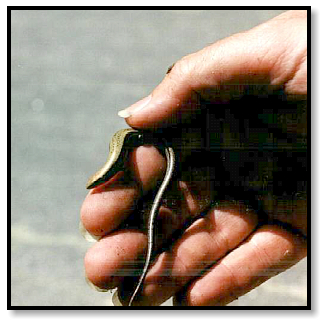
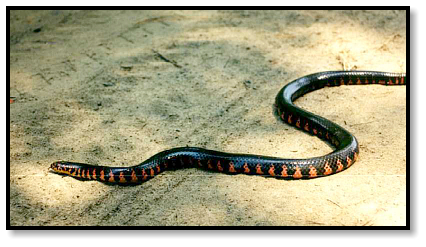
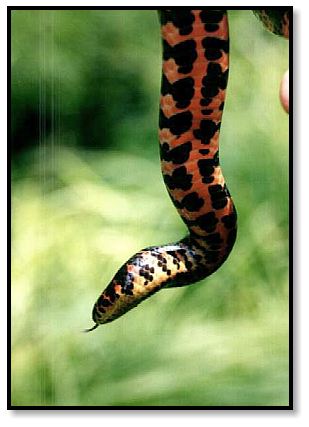
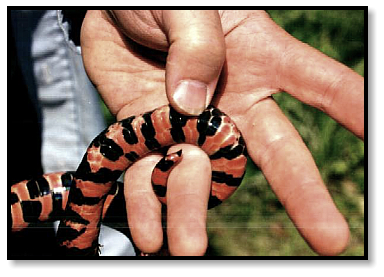
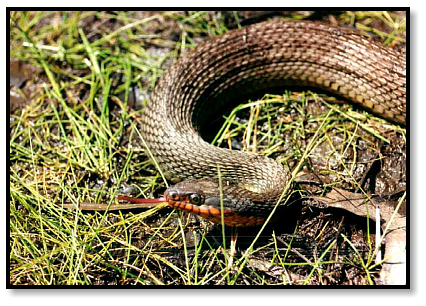

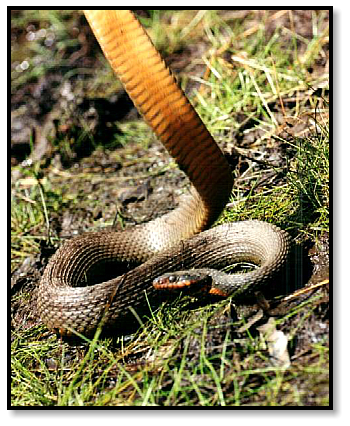
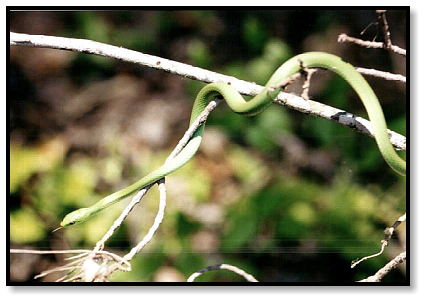
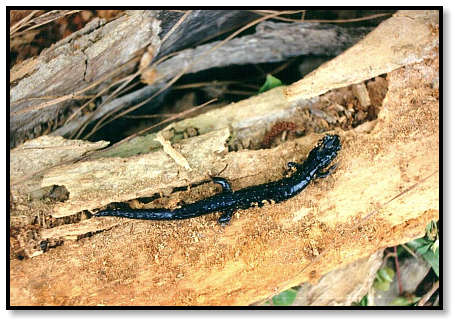
Redbelly Water Snake
Nerodia erythrogaster
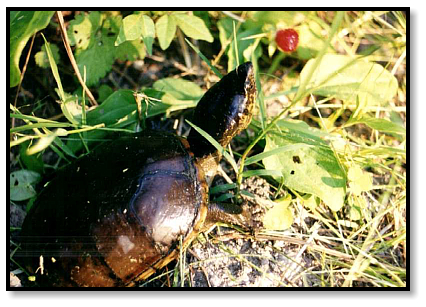
Common Musk Turtle
Sternotherus odoratus
Northern Black Racer
Coluber constrictor constrictor
Eastern Worm Snake
Carphophis amoenus
Eastern Narrowmouth Toad
Gastrophryne carolinensis
Atlantic Coast Slimy Salamander
Plethedon glutinosus ssp.
Green Anole
Anolis carolinensis
Northern Fence Lizard
Sceloporus undulatus
Five-lined Skink
Eumeces fasciatus
Rough Green Snake
Opheodrys vernalis
Mud Snake
Farancia abacura







